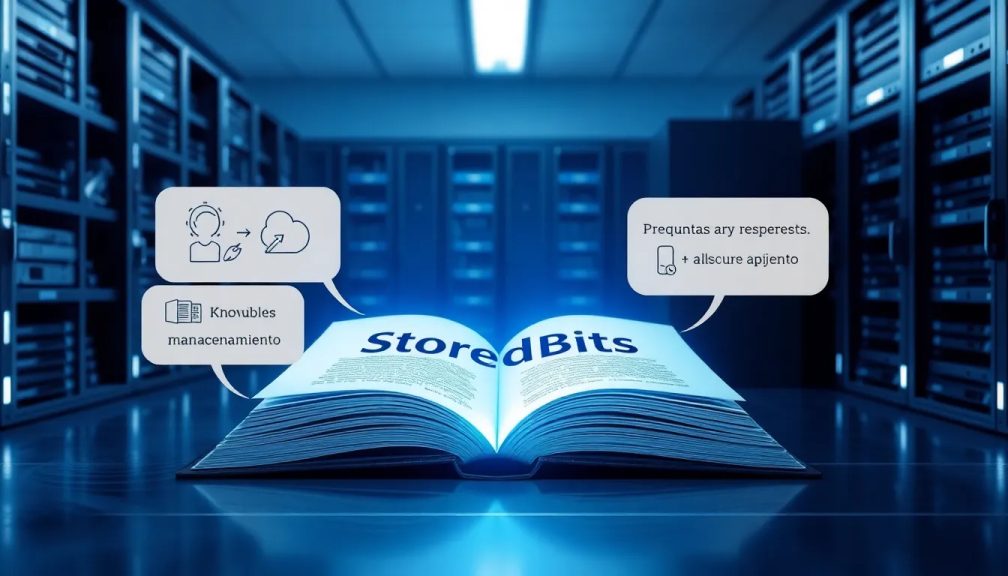StoredBits: Your Source for Storage Questions and Answers

Understanding data storage is crucial in our technology-driven world, where digital information flows endlessly. Whether you're a casual user, a professional, or an enthusiast, knowing the ins and outs of storage solutions can enhance your experience and protect your valuable data. Let's dive into the various aspects of storage technologies and their implications.
What is Data Storage and Why Does it Matter?
Data storage refers to the method of recording, retaining, and accessing information. In a digital context, it encompasses everything from hard drives and solid-state drives (SSDs) to cloud storage solutions. As our reliance on technology grows, so does the importance of understanding how data storage works.
Data storage is essential for various reasons:
- Data Preservation: Ensures that important files, documents, and memories are kept safe.
- Accessibility: Allows users to access data quickly and efficiently.
- Performance: Affects how fast applications and systems run based on storage speed and capacity.
Types of Storage: An Overview
The landscape of data storage is diverse and expanding. Here are the main types of storage solutions currently available:
- Hard Disk Drives (HDD): Traditional storage devices that use spinning disks to read and write data.
- Solid State Drives (SSD): Faster and more durable than HDDs, these devices use flash memory for data storage.
- Cloud Storage: Online storage solutions that allow users to store data on remote servers, accessible via the internet.
- Network Attached Storage (NAS): A dedicated file storage device connected to a network, providing data access to multiple users.
Comparing SSDs: Samsung 990 Pro vs. Competitors
In the realm of high-performance SSDs, the Samsung 990 Pro stands out, but it's not without competition. Key competitors include:
- Crucial T710: Known for its robust performance and reliability.
- Western Digital Black SN850: Offers high speeds and is favored by gamers and content creators.
- ADATA XPG Gammix S70: Combines speed with affordability for budget-conscious buyers.
When comparing these drives, consider factors such as speed, endurance, and price to determine the best fit for your needs.
Understanding RAM and Its Role in Data Processing
Random Access Memory (RAM) is a critical component of any computer system, serving as temporary storage that the CPU uses to process data effectively. Here’s how it operates:
- Speed: RAM is much faster than traditional storage, allowing quick data retrieval.
- Volatility: Data stored in RAM is lost when the computer is turned off, making it temporary.
- Capacity: More RAM generally means better multitasking capabilities and improved performance.
Think of RAM as a workspace where your computer can quickly access and manipulate data while performing tasks.
The Lifecycle of Deleted Files on SSDs
When you delete a file on an SSD, the process is not as straightforward as it seems. Here’s what happens behind the scenes:
- TRIM Command: This command informs the SSD which blocks of data are no longer in use, allowing for more efficient data management.
- Wear Leveling: SSDs distribute write and erase cycles across memory cells to extend their lifespan.
- Data Recovery: Deleted files may still be recoverable until the SSD reclaims the space, complicating data security.
Understanding this lifecycle can help users make informed decisions about data deletion and recovery strategies.
Maximizing the Lifespan of Your SSD
To ensure your SSD remains reliable and efficient, consider the following best practices:
- Keep Firmware Updated: Regular updates can improve performance and security.
- Avoid Overfilling: Keeping some free space helps maintain speed and prolongs the lifespan.
- Monitor Health: Use monitoring tools to check the drive’s health and performance metrics.
Future Trends in Data Storage
As technology evolves, so do storage solutions. Emerging trends include:
- Increased Capacities: Drives are becoming larger and more affordable, making it easier to store vast amounts of data.
- Faster Speeds: Innovations like PCIe 5.0 are dramatically increasing data transfer rates.
- Enhanced Security: Storage solutions are implementing better encryption methods to protect sensitive data.
For a deeper understanding of storage solutions, you can explore this informative video titled "Answers to the Most Popular Long Term Food Storage Questions" that covers various aspects of data storage in detail:
Conclusion
Deciphering the complexities of data storage can empower users to make better decisions regarding their digital lives. Whether considering SSDs, HDDs, or cloud solutions, understanding the underlying technology is key to maximizing performance and protecting valuable data.




Leave a Reply